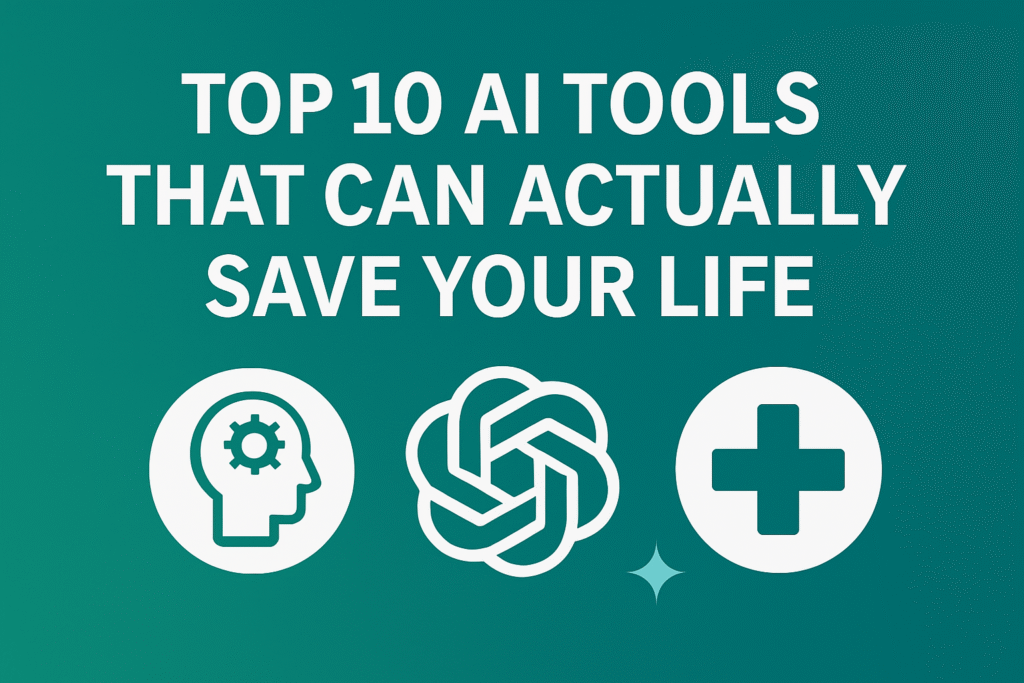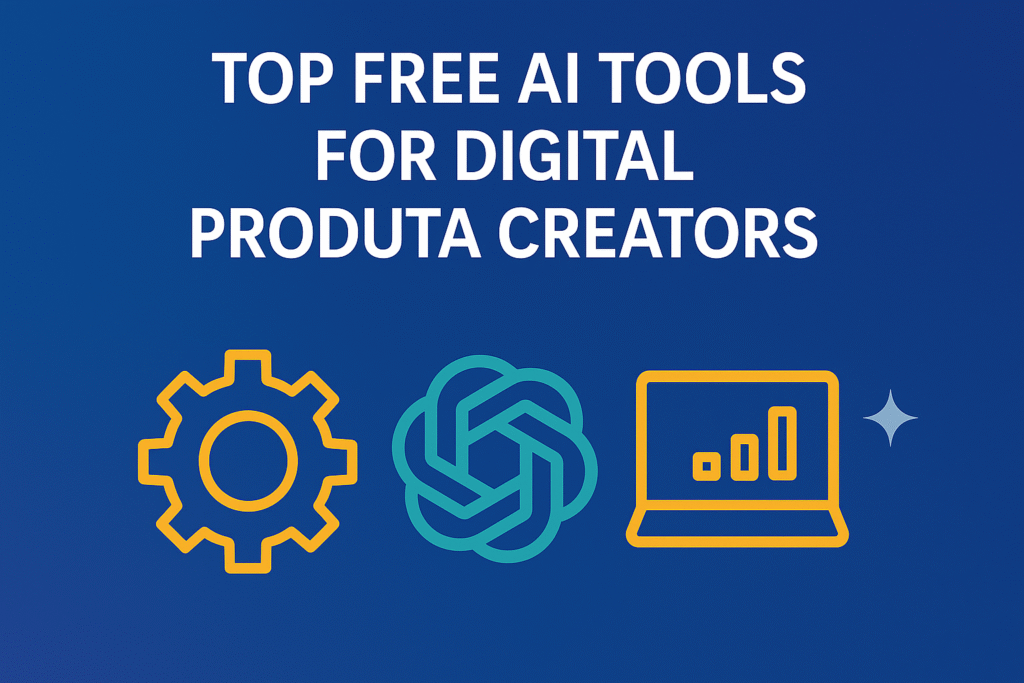Music and voice are two of the most exciting areas where artificial intelligence has made a real difference. A few years ago, the idea of generating a full track or creating realistic voiceovers with AI sounded futuristic. Today, it’s practical, affordable, and surprisingly effective.
If you’re a musician, podcaster, video creator, or marketer, the right AI tools for music and voice generation can save you hours of work. They don’t replace creativity — instead, they speed up the process, help with brainstorming, and make high-quality production more accessible.
In this guide, I’ll share the AI tools I’ve personally tested over the past decade of working with content creation and digital marketing. These aren’t gimmicks. They’re the tools that actually work, and I’ll explain what they’re best for, their limitations, and how you can use them in your projects.
Why AI Music and Voice Tools Matter
When I started producing content 10 years ago, creating background music or professional voiceovers was a challenge. You either needed expensive software, a sound engineer, or a voice actor. For small creators and businesses, that wasn’t always possible.
Now, AI makes it possible to:
- Generate custom soundtracks for YouTube videos or ads.
- Create lifelike voiceovers in multiple languages.
- Experiment with melodies before recording.
- Add affordable audio production to projects without a big budget.
It’s not about replacing artists or narrators — it’s about lowering the barrier to entry so anyone can make quality audio.
1. AI Tools for Music Generation
AI music tools can create beats, instrumentals, or full tracks. They’re especially useful if you need background music quickly without worrying about licensing.
AIVA
AIVA has been around for years and is often used for film, games, and ads. It lets you compose music in different styles and moods.
- Strengths: High-quality orchestral and cinematic music.
- Limitations: Less suited for modern genres like hip-hop.
- Personal tip: I once used AIVA to create background tracks for a client’s explainer video. It saved us both licensing headaches and hundreds of dollars.
Soundraw
Soundraw.io allows you to generate music based on your chosen mood, length, and instruments.
- Strengths: Great for YouTube or social media creators.
- Limitations: Requires tweaking to get the right “feel.”
- Example: I used Soundraw to create short intro tracks for Instagram Reels campaigns — it gave me unique, copyright-safe audio fast.
Amper Music
Now part of Shutterstock, Amper Music is one of the most beginner-friendly AI music tools.
- Strengths: Simple interface, easy for non-musicians.
- Limitations: Less customization compared to advanced tools.
- Who it’s for: Marketers or creators who just need quick royalty-free tracks.
2. AI Tools for Voice Generation
Voice generation has come a long way. AI voiceovers can now sound natural enough for commercials, podcasts, or training videos.
Murf.ai
Murf.ai is one of my favorites for creating professional voiceovers. It offers a library of realistic voices in different accents and tones.
- Strengths: High-quality, natural-sounding narration.
- Limitations: Requires a subscription for commercial use.
- Example: I’ve used Murf to create multilingual ads for clients. It worked perfectly when hiring multiple voice actors wasn’t an option.
Play.ht
Play.ht provides realistic text-to-speech with voice cloning features.
- Strengths: Podcast-quality voices.
- Limitations: Some voices still sound robotic at long-form narration.
- Tip: Works well for audiobooks or training materials.
LOVO
LOVO.ai is popular for creators who want quick, flexible voiceovers.
- Strengths: Wide selection of voices and emotions.
- Limitations: Limited free plan.
- Use case: Perfect for social media ads and short content.
3. Combining Music and Voice AI Tools
Here’s where things get exciting: combining music and voice tools can give you complete control over your project.
Example workflow I’ve used:
- Generate a background track with Soundraw.
- Create a voiceover with Murf.ai.
- Edit them together in a tool like Audacity or Premiere Pro.
The result is a polished, professional ad or video without needing a full studio setup.
4. Things to Keep in Mind
While these tools are powerful, they’re not perfect.
- Licensing matters: Always check whether the output is royalty-free for commercial use.
- AI still has limits: Long narration can sometimes sound “flat.”
- Ethics: Avoid using cloned voices without consent.
From experience, I’ve found that AI works best when paired with human oversight. For example, I often polish AI-generated scripts or mix AI music with live instruments to keep the final product authentic.
5. My Recommended Starter Setup
If you’re new and want to test AI tools for music and voice generation, here’s a beginner-friendly combo that works:
- Background music: Start with Amper Music (easy and quick).
- Voiceover: Use Murf.ai for professional narration.
- Editing: Use free tools like Audacity or DaVinci Resolve to put it all together.
This setup costs very little (some free, some low-cost plans) and can produce content that looks and sounds like you spent hundreds.
Conclusion: AI Tools That Actually Work
The rise of AI tools for music and voice generation has opened the door for creators of all levels. You don’t need a studio, a producer, or a big budget. What you need is creativity, a clear message, and the willingness to experiment.
From my experience, the best results come when you treat AI as a collaborator. Let it handle the technical side, and you focus on the ideas. Whether it’s background tracks for YouTube, voiceovers for ads, or even just testing new creative concepts — these tools really do work.
If you haven’t tried them yet, pick one tool from the list and test it on your next project. You might be surprised at how much easier content creation becomes.
FAQs About AI Tools for Music and Voice Generation
1. Are AI music and voice tools free?
Many offer free plans or trials, but advanced features usually require a paid subscription. Always check usage rights before publishing commercially.
2. Can AI-generated music be used on YouTube?
Yes, if the tool provides royalty-free music for commercial use. Tools like Soundraw and Amper are popular among YouTubers.
3. Do AI voice tools sound natural?
Yes, tools like Murf.ai and Play.ht have voices that are almost indistinguishable from humans, though longer narrations may need editing.
4. Can AI replace musicians or voice actors?
Not completely. AI helps with speed and cost, but human creativity and emotion still add a unique touch.
5. What’s the best AI tool for beginners?
For music, try Amper Music. For voice, start with Murf.ai. Both are beginner-friendly and give professional results quickly.



